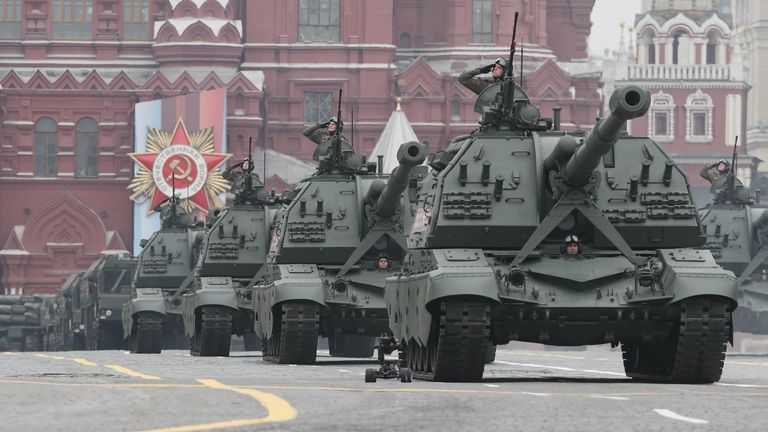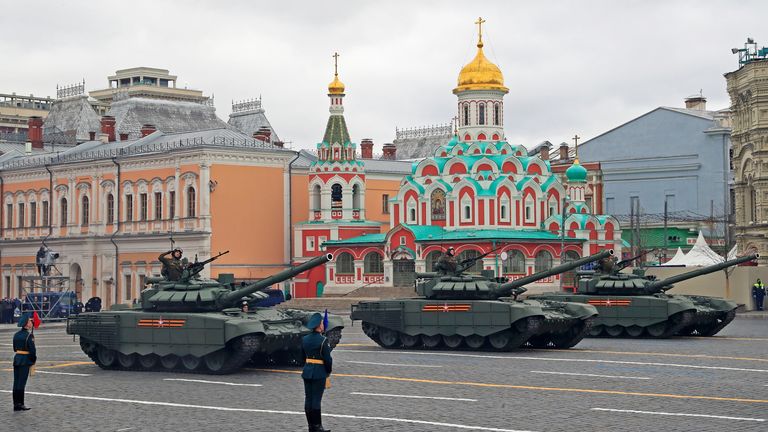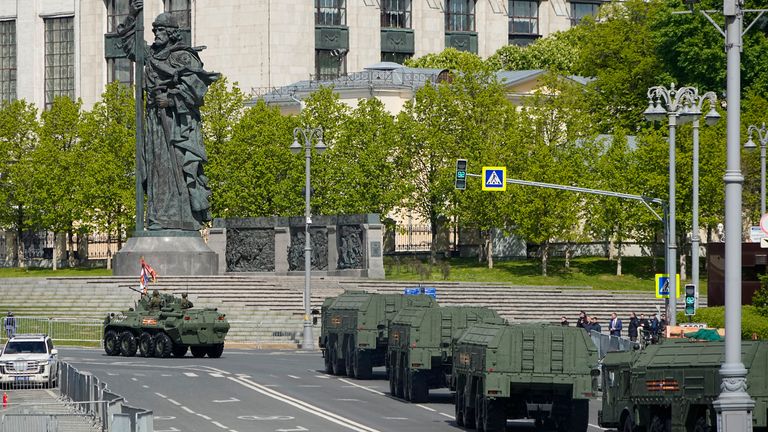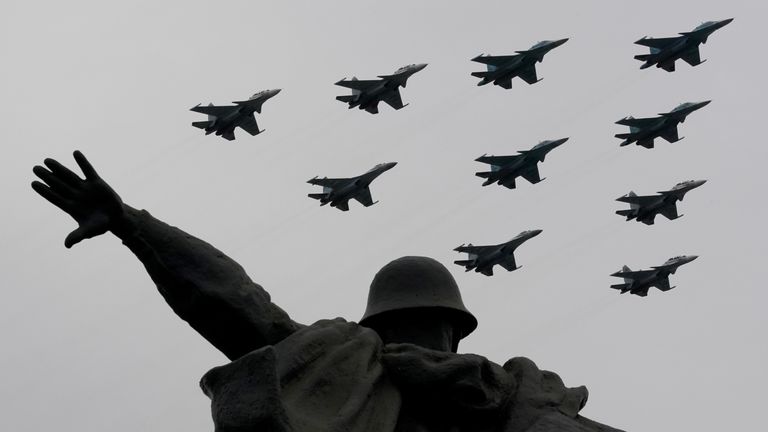Soldiers marching through the streets of Moscow, armoured vehicles rolling across Red Square and a rallying cry from Vladimir Putin talking of the West’s “real war”.
On the surface, Russia’s Victory Day parade may have seemed like business as usual – despite reports beforehand that it was set to be scaled back over security fears.
But the numbers tell a different story.
With just over 50 vehicles on display, the usually-impressive procession was just a quarter of its usual size in terms of tanks, transporters and missile carriers.
There was also no traditional flyover from Russia’s airforce.
Instead, this year’s parade was led through Red Square by a single tank – a far cry from the usual display of military might often displayed on Victory Day.
Ukraine-Russia war latest: What Putin wants to avoid at all costs
As is the tradition on the day that marks Russia’s victory over Nazi Germany, that tank was a Second World War-era T-34-85 flying the Soviet Red Flag.
But in previous years, the T-34-85 would have been followed by a large column of modern-day fighting vehicles, including Russia’s prized T-14 Armata and T-90 tanks.
Not this year – a year in which Russia has suffered significant losses following its February 2022 invasion of neighbouring Ukraine.
Analysts believe just 51 vehicles were involved in the 2023 procession.
That is a quarter of the 200 pieces of military hardware that rolled through the streets of Moscow in 2020 when Russia marked the 75th anniversary of the end of the Second World War.
Even last year – just months after Russia invaded Ukraine – the number of vehicles involved was as high as 131 vehicles – around the same as the pre-COVID 2019 event.
According to one independent analyst, Oliver Alexander, this year’s parade is the first year that he has not seen an official graphic detailing the procession.
However, using Russia’s carefully curated broadcast of the procession, he was able to spot a total of 51 vehicles.
Among them were several Tigr-Ms – a 4×4 infantry mobility vehicle used to move troops and carry out patrols.
Mr Alexander also counted 10 Remdiesel Z-STS Akhmat MRAPs – armoured vehicles which he said were only used by forces from Chechnya.
Missile launchers and air defence units were also included in the parade – as is tradition.
Read more:
Putin’s ‘grotesque fictions’ exposed on much-changed Victory Day
However, according to Mr Alexander, there were no short-range air defences and no Russian Airborne Forces (also known as VDV), who were heavily involved in the early stages of Russia’s invasion of Ukraine.
The traditional Victory Day flyover – involving Russia’s Su-30SM, Su-34 and Su-35S combat aircraft flying in formation – was also cancelled in advance.
One section of the procession that did not appear to change however is the appearance of three RS-24 YARS – Russia’s thermonuclear armed intercontinental ballistic missiles.
Three of the large missile units were on display this year, as they were in 2020, 2021 and 2022.
This story originally appeared on Skynews








